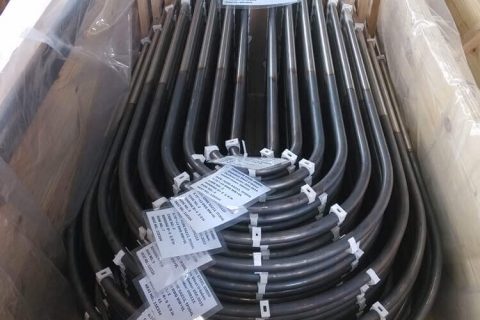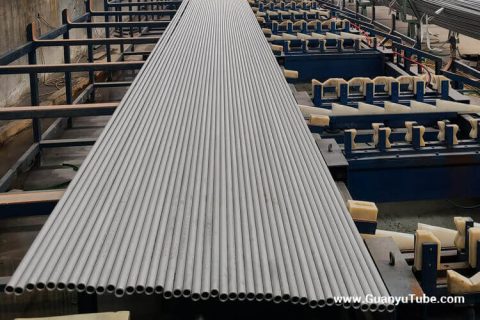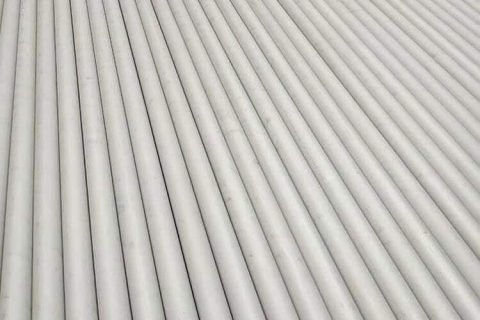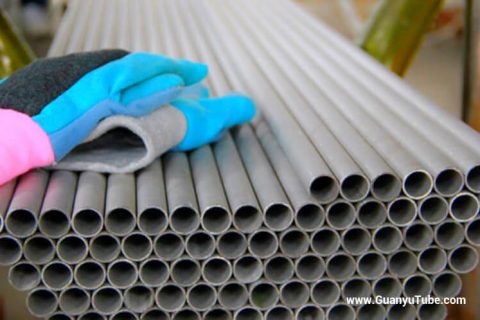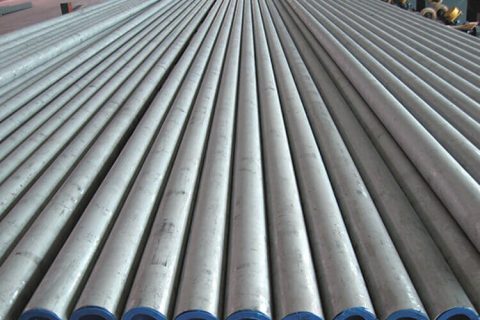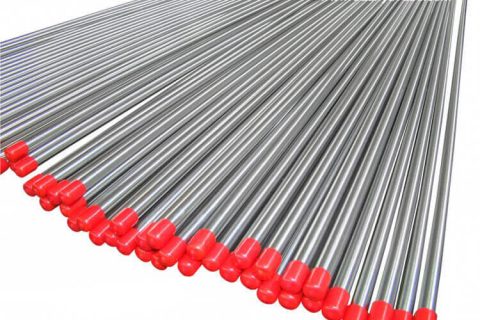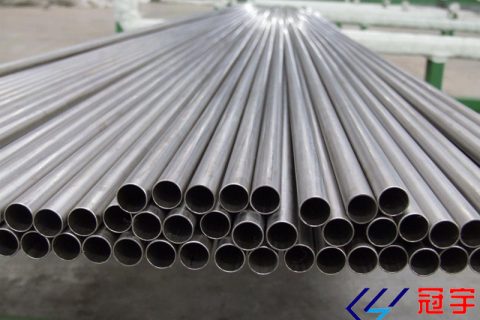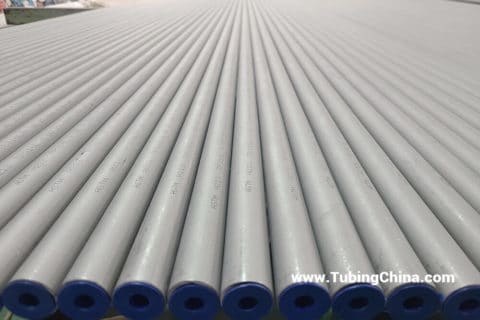ASME SA213 TP304H A213 304H Stainless Steel Tubes
Guanyu Tube is specialized manufacturer of ASME SA213 TP304H Stainless steel tubes.
Material Composition: Austenitic stainless steel with high chromium (18–20%) and nickel (8–11%) content, enhanced by a controlled carbon content (0.04–0.10%) for improved high-temperature strength.
Composition ranges for ASME SA 213 304H
| Grade | – | C | Mn | Si | P | S | Cr | Mo | Ni | N |
| 304/S30400 | min.max. | -0.08 | -2.0 | -1.00 | -0.045 | -0.030 | 18.0-20.0 | – | 8.0-11.0 | – |
| EN 10216-5 1.4301 | min.max. | -0.07 | -2.0 | -1.00 | -0.040 | -0.015 | 17.00-19.5 | – | 8.0-10.5 | -0.11 |
| 304L/S30403 | min.max. | -0.035 | -2.0 | -1.00 | -0.045 | -0.030 | 18.0-20.0 | – | 8.0-12.0 | – |
| EN 10216-5 1.4307 | min.max. | -0.030 | -2.0 | -1.00 | -0.040 | -0.015 | 17.5-19.5 | – | 8.0-10.0 | -0.11 |
| 304H /S30409 | min.max. | 0.04-0.10 | -2.0 | -1.00 | -0.045 | -0.030 | 18.0-20.0 | – | 8.0-11.0 | – |
| EN 10216-5 1.4948 | min.max. | 0.04-0.08 | -2.0 | -1.00 | -0.035 | -0.015 | 17.0-19.0 | – | 8.0-11.0 | -0. |
ASME SA213 TP304H Stainless Steel Tubes Mechanical properties
| – | Tensile Strength | Yield Strength | Elongation | Hardness | Hardness |
| Grade | (MPa) min | 0.2% Proof (MPa) min | (% in 50mm) min | Rockwell B (HR B) max | Brinell (HB) max |
| 304 | 515 | 205 | 35 | 90 | 192 |
| 304L | 485 | 170 | 35 | 90 | 192 |
| 304H | 515 | 205 | 35 | 90 | 192 |
- High-Temperature Performance: Designed for elevated-temperature service (up to ~815°C/1500°F), offering excellent creep resistance and oxidation resistance.
- Corrosion Resistance: Resists oxidation, scaling, and general corrosion in oxidizing and mildly reducing environments.
- Manufacturing Standards: Seamless pipe produced via cold/hot working, complying with ASME Boiler and Pressure Vessel Code for precise mechanical properties.
- Heat Treatment: Solution-annealed to dissolve carbides and ensure optimal microstructure stability.
Typical Applications
- Power Generation: Superheaters, reheaters, and heat exchangers in boilers for coal-fired, nuclear, or thermal power plants.
- Petrochemical Industry: High-temperature piping systems in refineries, chemical reactors, and catalytic cracking units.
- Heat Processing Equipment: Furnace tubes, radiant coils, and components exposed to cyclic thermal stress.
- Oil & Gas: Components in steam methane reformers and other high-pressure, high-temperature (HPHT) systems.
Usage Considerations
- Temperature Limits:
- Avoid prolonged exposure to 425–860°C (800–1580°F) to prevent carbide precipitation (sensitization), which reduces corrosion resistance. Post-weld annealing may be required.
- Welding Practices:
- Use low-carbon filler materials (e.g., ER308L) to minimize sensitization.
- Follow ASME Section IX procedures; ensure inert gas shielding (TIG/MIG) to prevent contamination.
- Mechanical Stress:
- Avoid excessive mechanical deformation during installation; support pipes properly to mitigate thermal expansion stress.
- Corrosion Risks:
- Not suitable for chloride-rich environments (risk of pitting/crevice corrosion).
- Regular inspections for oxidation scaling, especially in cyclic thermal conditions.
- Cleaning & Maintenance:
- Use chloride-free cleaning agents; avoid abrasive tools that may damage the passive oxide layer.
Standards Compliance
- Meets ASME SA213 specifications for seamless ferritic and austenitic alloy-steel boiler tubes.
- Certifications include mill test reports (MTRs) for chemical composition, mechanical testing, and hydrostatic pressure validation.


